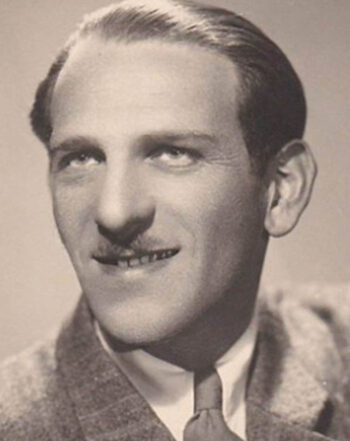Rosin, Arnošt

Arnošt Rosin (born in 2013) was deported to Auschwitz from Slovakia on 17 April 1942. He escaped from the camp on 27 May 1944 together with Czesław Mordowicz. They both wrote a report together, which was added to the so-called War Refugee Board Report, whose main component is a lengthy report authored by Alfred Wetzler and Rudolf Vrba. However, Rosin’s and Mordowicz’s essay was added not as an independent account, but as a sequel to Wetzler’s and Vrba’s text. It is a brief chronicle of alleged events without further information on the alleged extermination techniques. In particular, it does not mention the alleged bunkers of Birkenau, a topic also neglected by Wetzler and Vrba. The report furthermore does not claim that Rosin had been a member of the Sonderkommando, yet merely repeats hearsay information from them.
One specific claim allegedly learned from the Sonderkommando is an invented inspection of Birkenau’s Crematorium II by Himmler in mid-May 1944, just at the start of the deportation of the Hungarian Jews. Another invented, rather puerile fairy tale allegedly learned from the Sonderkommando is the claimed inspection of the Auschwitz Camp and of Birkenau’s Crematorium II by a committee of four Dutch Jews, who wrote a report describing the conditions at Auschwitz in favorable terms, but who then unfortunately ended up getting killed when entering the crematorium. Needless to say, there is no trace of any of this happening, nor is it conceivable that the German authorities would have agreed to an inspection by a “committee of Jews.”
Rosin’s contribution to this report also claims that, during the deportation of Hungarian Jews to Auschwitz, “4 pits about 30 meters long and 15 meters wide” were burning day and night near Birkenau Camp, making the camp’s cremation capacity “almost unlimited.” However, air photos show that no huge burning and smoking pits existed during that time.
In later testimonies, in order to be able to describe things in more detail, Rosin depicted himself suddenly as a member of the Sonderkommando, which is simply a postwar invention to be able to testify in court. Rosin testified during the Polish show trials against former Auschwitz camp commandant Rudolf Höss and against other members of the Auschwitz Camp’s former staff. Rosin stated, among other things:
- Because freshly dug mass graves had filled up with water, pumps were brought, and the three top officials of the camp themselves, Höss among them, pumped out the water with the help of others. No camp commandant would be present, let alone help, to do such menial work. This was clearly a lie meant to frame the defendant.
- Rosin described the facilities where mass murder supposedly occurred in April 1942, when he claimed to have started working there. This would have been the so-called Bunker 1, but his description of it and its start of operation (sometime in May 1942) do not match the orthodox account. For Rosin, the facility allegedly had only one chamber measuring 4 m × 4 m, or maybe 5 m × 5 m, yet 300 persons were forced into it, resulting in an impossible packing density between 12 and 19 persons per square meter. The orthodoxy insists, however, that this phantom facility measured some 15 m × 6 m, had two gas chambers, and started operations in late March 1942.
- Himmler’s crematorium inspection from mid-May 1944 was shifted by Rosin to February 1943, on occasion of the first claimed gassing in Crematorium II, and Poland’s governor general Hans Frank was present as well, which is a unique claim. This change makes Rosin’s story align better with other witness statements, but even the orthodoxy agrees that these stories are all false, hence made up.
- Rosin stated that all inmates of the Sonderkommando were eventually killed on special orders from Höss. Again, this was a lie to frame Höss. But if all Sonderkommando members were killed, and he was one of them, how did he manage to survive? He doesn’t say, but it probably doesn’t matter, since his membership and all tales based on it are pure inventions.
(For more details, see Mattogno 2021, pp. 329-335.)

You need to be a registered user, logged into your account, and your comment must comply with our Acceptable Use Policy, for your comment to get published. (Click here to log in or register.)